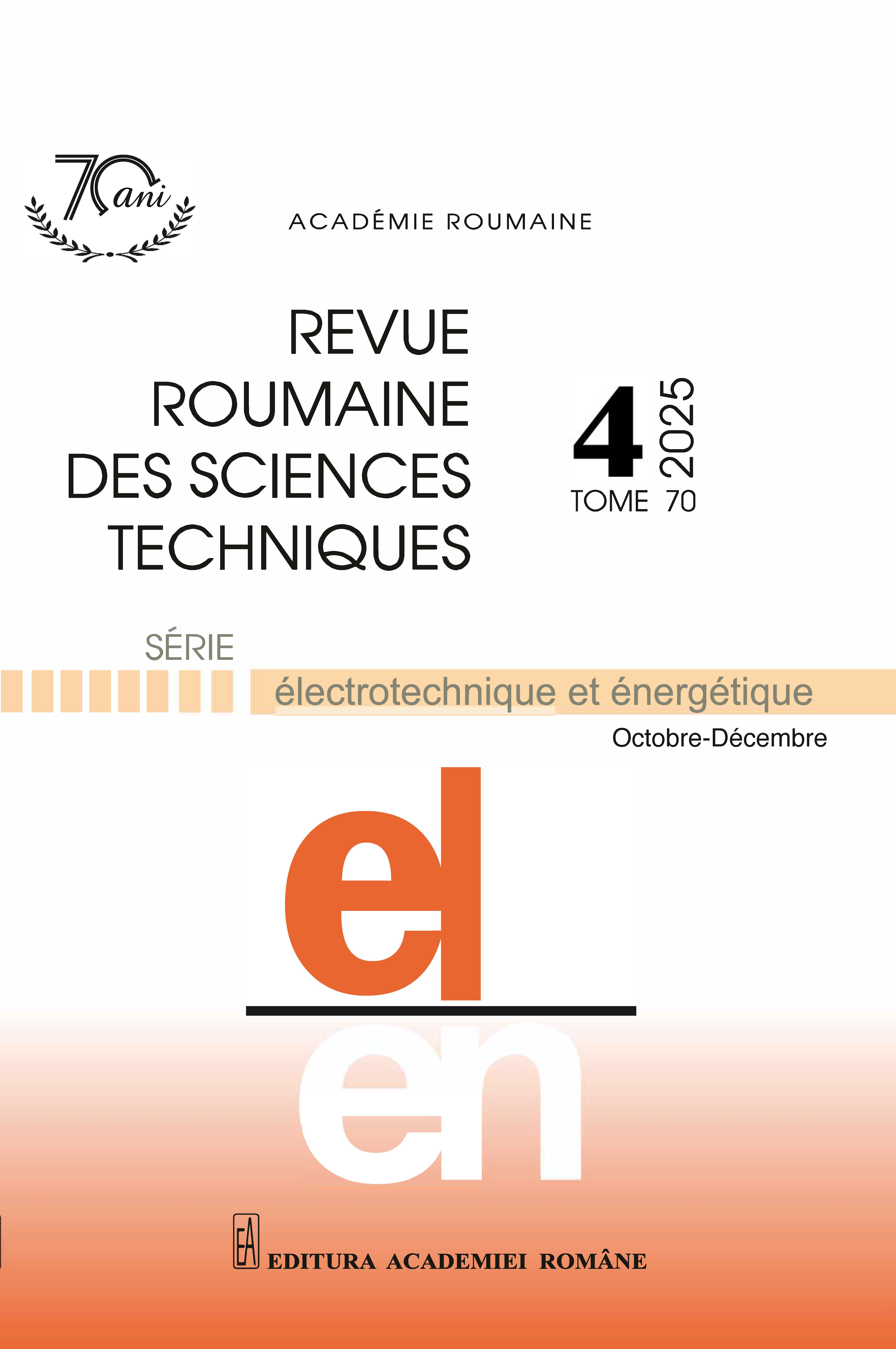SYSTÈME D'AUTHENTIFICATION SANS FIL POUR L'INTERNET DES OBJETS UTILISANT FREERADIUS ET LA BLOCKCHAIN
DOI :
https://doi.org/10.59277/RRST-EE.2025.4.26Mots-clés :
IoT, FreeRADIUS, Hyperledger, Private Blockchain, Authentication, Network SecurityRésumé
Les réseaux Wi-Fi sont essentiels pour la connectivité sans fil dans les foyers, les entreprises et les lieux publics. Cependant, de nombreuses personnes utilisent encore le protocole obsolète Wi-Fi Protected Access 2 (WPA2), connu pour ses failles de sécurité. Celles-ci permettent aux pirates d'intercepter et de voler des données ou d'obtenir un accès non autorisé. Bien que le protocole WPA3 offre une sécurité améliorée grâce à un cryptage et une authentification plus puissants, son adoption a été limitée car de nombreux appareils plus anciens ne le prennent pas en charge. Pour relever ce défi, nous proposons un système d'authentification décentralisé qui intègre un serveur FreeRADIUS avec un mécanisme de validation hébergé localement. Nous avons mis en place une blockchain privée à l'aide de Ganache afin de vérifier si le hachage du certificat d'un appareil est enregistré. Bien que le système soit conçu pour fonctionner sans dépendre d'un seul backend, notre prototype héberge tous les composants sur la même machine ; un déploiement en production nécessiterait des nœuds distribués pour une meilleure résilience. Nos résultats montrent que la vérification basée sur la blockchain ajoute environ 300 millisecondes au processus d'authentification. Cependant, une fois l'authentification effectuée, la communication reste stable, ce qui indique que l'approche proposée est à la fois pratique et sécurisée pour la vérification des appareils dans de tels réseaux.
Références
(1) R. Almutairi, G. Bergami, and G. Morgan, Advancements and Challenges in IoT Simulators: A Comprehensive Review, Sensors, 24, 5, pp. 1511 (2024).
(2) M. Almasre and A. Subahi, Create a Realistic IoT Dataset Using Conditional Generative Adversarial Network, Journal of Sensor and Actuator Networks, 13, 5, pp. 62 (2024).
(3) Z. Liu, L. Meng, Q. Zhao, F. Li, M. Song, Y. Jian, and H. Tian, Authenticated Key Agreement Scheme Based on Blockchain for AMI Communication Security, Rev. Roum. Sci. Techn. – Électrotechn. Et Énerg., 68, 2, pp. 218–223 (2023).
(4) Z.N.P.K. Lang, Blockchains in Public Administration: A RADIUS on Blockchain Framework for Public Administration, Thesis, Goethe-Universität Frankfurt am Main (2024).
(5) E.F. Hoffmann, C. Machado, and C.M. Westphall, RadChain Connect: Integration Between Blockchain and FreeRADIUS for Secure Authentication in Wi-Fi Networks/Web Environment, In Lecture Notes in Computer Science, 2025 International Conference on Information Networking (ICOIN), pp. 431–436 (2025).
(6) H. Hu, J. Yu, Z. Lin, H. Wu, and C. Yang, BlockLoader: A Comprehensive Evaluation Framework for Blockchain Performance Under Various Workload Patterns, Mathematics, 12, 21, pp. 3403 (2024).
(7) P. Oikonomou et al., Prototyping a Hyperledger Fabric-based Security Architecture for IoMT-based Health Monitoring Systems, Future Internet, 15, 9, pp. 308 (2023).
(8) A. Wilczyński and G. Jasnosz, Security Assessment of Smart Contract Integration and Wallet Interaction in Decentralized Applications: A Case Study of BlockScribe, Appl. Sci., 15, 15, pp. 8473 (2025).
(9) Y. Lai, J. Yang, M. Liu, Y. Li, and S. Li, Web3: Exploring Decentralized Technologies and Applications for the Future of Empowerment and Ownership, Blockchains, 1, 2, pp. 111–131 (2023).
(10) Z. Zhang, Y. Liu, Y. Zhang, and J. Zhang, A Secure and Efficient Authentication Scheme for Large-Scale IoT Networks, Electronics, 13, 18 (2024).
(11) ***ManageEngine: What is PKI? A Complete Guide to Public Key Infrastructure (2025).
(12) H. Li, X. Wang, and L. Zhang, Enhancing Security and Flexibility in the Industrial Internet of Things, Sensors, 24, 3, pp. 1035 (2025).
(13) C. Liu, HPCLS-BC: A Novel Blockchain Framework Using Heterogeneous Peer-Node and Cloud-Based Ledger Storage for Internet of Things Applications, Future Generation Computer Systems, 150, pp. 364–379 (2024).
(14) G.C. Serițan, B.A. Enache, I. Vilciu, S.D. Grigorescu, and V. Mladenov, Comparison study of top development boards in the context of IoT, Rev. Roum. Sci. Techn. – Électrotechn. et Énerg., 67, 4, pp. 483–486 (2022).
(15) R.A. Crăciun, R.N. Pietraru, and M.A. Moisescu, Internet of Things Platform Benchmark: An Artificial Intelligence Assessment, Rev. Roum. Sci. Techn. – Électrotechn. et Énerg., 69, 1, pp. 97–102 (2024).
(16) M. Gayathri Santhosh and T. Reshmi, Enhancing PKI Security in Hyperledger Fabric with an Indigenous Certificate Authority, In 2023 IEEE International Conference on Public Key Infrastructure and its Applications (PKIA), pp. 1–5 (2023).
(17) N. Paliwal, Setting up a WiFi Bridge Using Raspberry Pi 4 (2025).
(18) A. Rahman, M.J. Islam, S.S. Band, G. Muhammad, K. Hasan, and P. Tiwari, Towards a Blockchain-SDN-Based Secure Architecture for Cloud Computing in Smart Industrial IoT, Digital Communications and Networks, 9, 2, pp. 411–421 (2023).
(19) R. Alt and M. Gräser, Distributed Ledger Technology, Electronic Markets, 35, 1, pp. 53 (2025).
(20) J. Sychowiec and Z. Zieliński, A Collaborative Data Sharing Platform to Accelerate Translation of Biomedical Research, Biomedicines, 12, 9, pp. 938 (2024).
(21) M.S. Al Jasem, T. De Clark, and A.K. Shrestha, Toward Decentralized Intelligence: A Systematic Literature Review of Blockchain-Enabled AI Systems, Information, 16, 9, pp. 765 (2025).
(22) M. Jarosz, K. Wrona, and Z. Zieliński, Distributed Ledger-Based Authentication and Authorization of IoT Devices in Federated Environments, Electronics, 13, 19, pp. 3932 (2024).
(23) D. Penzes, Z. Vincze, and B. Varga, A Performance Analysis of Security Protocols for Distributed Measurement Systems Based on Internet of Things with Constrained Hardware and Open Source Infrastructures, Sensors, 24, 9, pp. 2781 (2024).
(24) R.V. Brăcăcescu, A proposal of digital identity management using blockchain, Rev. Roum. Sci. Techn. – Électrotechn. Et Énerg., 69, 1, pp. 85–90 (2024).
(25) C.A. Iordache and C.V. Marian, Project Management Expert System with Advanced Document Management for Public Institutions, Rev. Roum. Sci. Techn. – Électrotechn. Et Énerg., 69, 2, pp. 219–224 (2024).
Téléchargements
Publiée
Numéro
Rubrique
Licence
(c) Copyright REVUE ROUMAINE DES SCIENCES TECHNIQUES — SÉRIE ÉLECTROTECHNIQUE ET ÉNERGÉTIQUE 2025

Ce travail est disponible sous licence Creative Commons Attribution - Pas d'Utilisation Commerciale - Pas de Modification 4.0 International.


